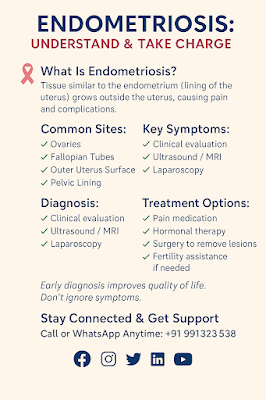💧 Urinary Incontinence: Causes, Types, and How You Can Take Control
Urinary incontinence, or involuntary leakage of urine, affects millions of people worldwide. While it is more common among older women, it is not an inevitable part of aging—and help is available.
This article will explain:
✅ What urinary incontinence is
✅ Why it happens
✅ Types of incontinence
✅ Diagnosis and treatment options
✅ Tips for self-care and prevention
🌿 What Is Urinary Incontinence?
Urinary incontinence is any loss of bladder control, resulting in unexpected leakage. For many, it leads to embarrassment, anxiety, and isolation, but it is a medical condition—not a personal failing.
🔍 Types of Urinary Incontinence
There are several kinds of urinary incontinence:
1️⃣ Stress Incontinence
Leakage when you cough, sneeze, laugh, exercise, or lift heavy objects.
Why it happens: Weak pelvic floor muscles can’t support the bladder and urethra properly.
Common after childbirth and menopause.
2️⃣ Urge Incontinence (Overactive Bladder)
Sudden, intense urge to urinate followed by leakage.
Why it happens: Bladder muscles contract involuntarily.
Common in older adults.
3️⃣ Overflow Incontinence
Constant dribbling of urine because the bladder doesn’t empty fully.
Why it happens: Weak bladder muscles, nerve damage (e.g., diabetes), or blockages.
4️⃣ Functional Incontinence
Physical or mental impairments prevent reaching the toilet in time.
Examples: severe arthritis, dementia.
5️⃣ Mixed Incontinence
A combination of stress and urge incontinence symptoms.
⚠️ What Causes Urinary Incontinence?
The causes depend on the type. The most common contributors include:
✅ Weak pelvic floor muscles (childbirth, menopause)
✅ Nerve damage (diabetes, stroke, Parkinson’s)
✅ Bladder infections
✅ Certain medications (diuretics, sedatives)
✅ Constipation
✅ Excess body weight, which increases pressure on the bladder
✅ Hormonal changes
✅ Chronic coughing (smoking, lung disease)
🩺 How Is It Diagnosed?
If you experience leakage, see your doctor. Diagnosis usually involves:
✅ Detailed medical history and symptom review
✅ Bladder diary—tracking when leakage happens
✅ Physical exam (pelvic exam in women, prostate check in men)
✅ Urinalysis to check for infection
✅ Bladder scan or ultrasound
✅ Urodynamic testing to measure bladder function
🌿 Treatment Options
Treatment depends on the type and severity of incontinence, as well as your general health and preferences.
🔹 Lifestyle Changes
✅ Reduce caffeine, alcohol, and fizzy drinks
✅ Maintain a healthy weight
✅ Quit smoking
✅ Manage constipation
✅ Bladder training (scheduled voiding, delaying urination)
🔹 Pelvic Floor Exercises (Kegels)
Strengthen the muscles that support your bladder. A physiotherapist or gynecologist can guide you.
🔹 Medications
-
Anticholinergics: Relax bladder muscles (for urge incontinence)
-
Topical estrogen: Improves tissue health in postmenopausal women
-
Mirabegron: Relaxes bladder and increases storage capacity
🔹 Devices
-
Pessary: A device inserted into the vagina to support the bladder
-
Catheters: For severe cases or overflow incontinence
🔹 Surgical Options
-
Sling procedures (support the urethra)
-
Bladder neck suspension
-
Artificial urinary sphincter (in selected cases)
💛 Emotional Impact and Support
Urinary incontinence affects mental well-being. It can cause:
🔹 Embarrassment
🔹 Social withdrawal
🔹 Depression
You are not alone. Talking to a doctor and seeking support can help you regain confidence.
✨ Self-Care Tips
✅ Wear absorbent pads if needed—these are discreet and effective
✅ Practice pelvic floor exercises daily
✅ Plan bathroom visits
✅ Keep a bladder diary to track improvement
✅ Stay active and maintain strength
📞 Need Help?
Don’t ignore urinary incontinence—it is treatable.
For expert advice and treatment options:
📞 Call or WhatsApp: +91 99132331358
🔗 Stay Connected
For more women’s health resources and updates:
👍 Facebook 📸 Instagram 🐦 Twitter 💼 LinkedIn ▶️ YouTube
✨ Hashtags
#UrinaryIncontinence #WomensHealth #PelvicFloorHealth #HarshHospital #GeriatricCare #HealthEducation #ConfidenceMatters










